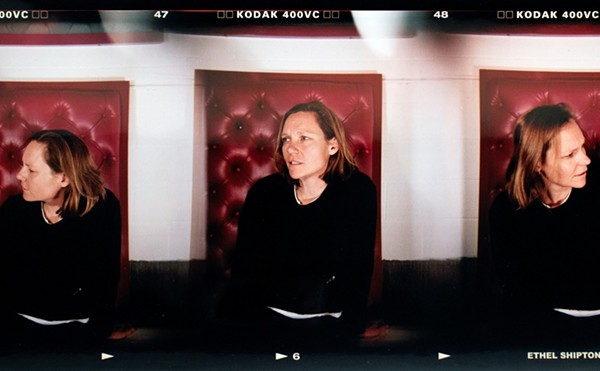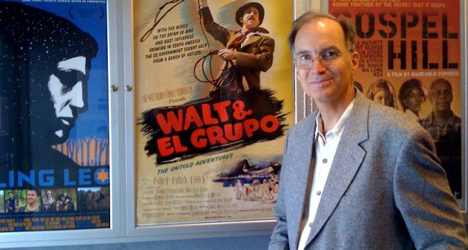
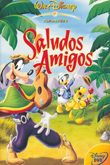
In the documentary film
Walt & El Grupo, filmmaker Ted Thomas takes audiences back to 1941 when Walt Disney and a small group of animators and artists made a U.S. government-funded trip to South America as goodwill ambassadors. At the time, the U.S. hoped the visit would help foreign relations during WWII. Their trip, which included Ted’s father, late Disney animator Frank Thomas, was also used to research story ideas and cultures for future studio projects. The resulting film was 1942’s
Saludos Amigos.
During an interview with me, Thomas discussed the impact the trip made on his life and what he remembers about first meeting Walt Disney in the early 60s.
Walt & El Grupo was released on DVD Nov. 30.
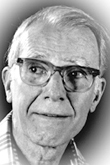 You have a personal connection with this story because your father was one of the animators who went on the trip to South America in 1941. Do you find it challenging to work on projects you are so close to? You did the same with your last film Frank and Ollie.
You have a personal connection with this story because your father was one of the animators who went on the trip to South America in 1941. Do you find it challenging to work on projects you are so close to? You did the same with your last film Frank and Ollie.
Some people feel like it’s important not to have any association with the story at all because they want to take more of a journalistic approach. I get drawn to stories I can immerse myself into. I have a different set of challenges in comparison to someone who is trying to do more of an investigative story. What I’m trying to do in this film is recapture a piece of history and bring it to life. Because that’s my goal, I think my closeness to the subject matter really helps in telling it.
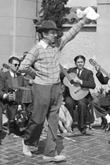 This trip happened 10 years before you were born. Was it something you remember your father talking about as you grew up?
This trip happened 10 years before you were born. Was it something you remember your father talking about as you grew up?
There were several stories I remember hearing growing up, but they were all humorous stories – funny stories about things that happened with the animators and artists that went on this trip. It wasn’t until I began researching the picture and got serious about making a film that we realized the larger picture and more serious themes that were underpinning this trip.
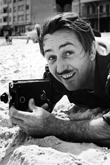 As you learned more about the story, did you feel Walt understood what that "larger picture" was or was the trip really just a research opportunity for him?
As you learned more about the story, did you feel Walt understood what that "larger picture" was or was the trip really just a research opportunity for him?
I think he was very much aware that everything he did or “El Grupo” did would end up being interpreted as an extension of the U.S. I don’t think he intentionally made the trip to do that because he didn’t want to be a goodwill ambassador. In fact, at one point he said, “I’m not a hand shaker, I’m a moviemaker.” He wasn’t going to do the trip unless he could use it as an opportunity to research stories that could be turned into films. In making the picture I was really astounded in photograph after photograph and newsreel after newsreel how constantly upbeat he was. He was really aware of making a good impression. I also think it’s an indication of the type of person he was.
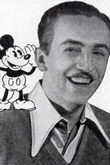 When did you meet Walt Disney and what was your first impression of him?
When did you meet Walt Disney and what was your first impression of him?
I think I was still a toddler when I met him, but the times I can remember were when I was about 10 years old. Once was at the studio in Burbank and once was at Disneyland in Anaheim. The impression of him was of a very charismatic man. He had a real magnetism about him. He had a way of engaging everyone around him, particularly children. You felt like he was paying attention to you while he was talking to you. There are some adults you meet when you are a kid and you realize they’re just being polite and they really have no interest in talking to you. Because my father worked closely with him for so many years, almost every evening at the dinner table I would hear one story or another about what Walt had said or what Walt was doing. When I finally got to meet him, it was an extension of the stories I had heard. I knew he was going to be someone very interesting.
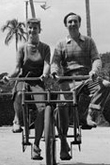 Did you make it a point to retrace the places Walt Disney, your father and the other animators traveled during their trip?
Did you make it a point to retrace the places Walt Disney, your father and the other animators traveled during their trip?
As I started researching the picture we realized the best way to share the story with an audience was to try and take them on the same trip and try and give them the same sense of discovery. For myself, it was a real joy to walk in those footsteps and to become more familiar with the cultures and nations and countries. That was really brought home when we started meeting the relatives and descendants of the people who had hosted them. It was very important for me from the very beginning for the film not to be just a one-way story. It needed to be a give-and-take story about the people who took the trip and the people who hosted them. I think they each had a lasting impact on the other.
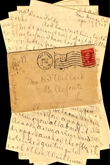 A large part of the film includes the letters that are sent from animators back to their families during the trip. How did you start tracking them down and were you surprised that these letters were kept all these years?
A large part of the film includes the letters that are sent from animators back to their families during the trip. How did you start tracking them down and were you surprised that these letters were kept all these years?
So much of the film happened by a happy accident. I met Cindy Garcia [the daughter of Disney animator Ted Sears] and asked her if she had anything from the trip. She said she had letters that her father wrote. Naturally, I jumped on that. My father passed away when we were beginning the film, but I knew he had a collection of letters he had written to his mother. She had saved every single one. Likewise, every descendant we met or were able to find I would ask them if they had any pictures, letters, journals, or any record at all we could use to help film the story.
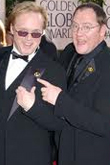 You mentioned your father passed away when you first started making this film, which was also around the time more computer-generated animations started making an impression in the industry. Did you ever get a chance to talk to your dad about the evolution of animation and where he thought it was going?
You mentioned your father passed away when you first started making this film, which was also around the time more computer-generated animations started making an impression in the industry. Did you ever get a chance to talk to your dad about the evolution of animation and where he thought it was going?
Yeah, in fact, after his retirement from Disney in 1978 he had a second career as an author about animation. He also spoke about animation and was a mentor to several top animators of today, including people like John Lasseter and Brad Bird. He was always very supportive of the idea of technology helping animation go in new directions. His feeling was whether it’s hand drawn or computer generated, it’s only going to be as good as the story and the interest the animator has in the characters they’re putting on the screen. He never felt one technique was automatically superior to another.
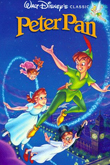 What was it like growing up with a father who was a Disney animator? When did you understand exactly what it was that he did for a living?
What was it like growing up with a father who was a Disney animator? When did you understand exactly what it was that he did for a living?
It must’ve been one of the cartoons that came out when I was pretty young like
Peter Pan. You see
Peter Pan and say, “Oh, dad did that.” You form an association like that and you realize your father is very talented and also does something really fun for his job. Growing up I was able to be around a lot of those extremely talented artists. My feeling was that whatever you do as a career it ought to be something exciting.

 In the documentary film Walt & El Grupo, filmmaker Ted Thomas takes audiences back to 1941 when Walt Disney and a small group of animators and artists made a U.S. government-funded trip to South America as goodwill ambassadors. At the time, the U.S. hoped the visit would help foreign relations during WWII. Their trip, which included Ted’s father, late Disney animator Frank Thomas, was also used to research story ideas and cultures for future studio projects. The resulting film was 1942’s Saludos Amigos.
During an interview with me, Thomas discussed the impact the trip made on his life and what he remembers about first meeting Walt Disney in the early 60s.
Walt & El Grupo was released on DVD Nov. 30.
In the documentary film Walt & El Grupo, filmmaker Ted Thomas takes audiences back to 1941 when Walt Disney and a small group of animators and artists made a U.S. government-funded trip to South America as goodwill ambassadors. At the time, the U.S. hoped the visit would help foreign relations during WWII. Their trip, which included Ted’s father, late Disney animator Frank Thomas, was also used to research story ideas and cultures for future studio projects. The resulting film was 1942’s Saludos Amigos.
During an interview with me, Thomas discussed the impact the trip made on his life and what he remembers about first meeting Walt Disney in the early 60s.
Walt & El Grupo was released on DVD Nov. 30.
 You have a personal connection with this story because your father was one of the animators who went on the trip to South America in 1941. Do you find it challenging to work on projects you are so close to? You did the same with your last film Frank and Ollie.
Some people feel like it’s important not to have any association with the story at all because they want to take more of a journalistic approach. I get drawn to stories I can immerse myself into. I have a different set of challenges in comparison to someone who is trying to do more of an investigative story. What I’m trying to do in this film is recapture a piece of history and bring it to life. Because that’s my goal, I think my closeness to the subject matter really helps in telling it.
You have a personal connection with this story because your father was one of the animators who went on the trip to South America in 1941. Do you find it challenging to work on projects you are so close to? You did the same with your last film Frank and Ollie.
Some people feel like it’s important not to have any association with the story at all because they want to take more of a journalistic approach. I get drawn to stories I can immerse myself into. I have a different set of challenges in comparison to someone who is trying to do more of an investigative story. What I’m trying to do in this film is recapture a piece of history and bring it to life. Because that’s my goal, I think my closeness to the subject matter really helps in telling it.
 This trip happened 10 years before you were born. Was it something you remember your father talking about as you grew up?
There were several stories I remember hearing growing up, but they were all humorous stories – funny stories about things that happened with the animators and artists that went on this trip. It wasn’t until I began researching the picture and got serious about making a film that we realized the larger picture and more serious themes that were underpinning this trip.
This trip happened 10 years before you were born. Was it something you remember your father talking about as you grew up?
There were several stories I remember hearing growing up, but they were all humorous stories – funny stories about things that happened with the animators and artists that went on this trip. It wasn’t until I began researching the picture and got serious about making a film that we realized the larger picture and more serious themes that were underpinning this trip.
 As you learned more about the story, did you feel Walt understood what that "larger picture" was or was the trip really just a research opportunity for him?
I think he was very much aware that everything he did or “El Grupo” did would end up being interpreted as an extension of the U.S. I don’t think he intentionally made the trip to do that because he didn’t want to be a goodwill ambassador. In fact, at one point he said, “I’m not a hand shaker, I’m a moviemaker.” He wasn’t going to do the trip unless he could use it as an opportunity to research stories that could be turned into films. In making the picture I was really astounded in photograph after photograph and newsreel after newsreel how constantly upbeat he was. He was really aware of making a good impression. I also think it’s an indication of the type of person he was.
As you learned more about the story, did you feel Walt understood what that "larger picture" was or was the trip really just a research opportunity for him?
I think he was very much aware that everything he did or “El Grupo” did would end up being interpreted as an extension of the U.S. I don’t think he intentionally made the trip to do that because he didn’t want to be a goodwill ambassador. In fact, at one point he said, “I’m not a hand shaker, I’m a moviemaker.” He wasn’t going to do the trip unless he could use it as an opportunity to research stories that could be turned into films. In making the picture I was really astounded in photograph after photograph and newsreel after newsreel how constantly upbeat he was. He was really aware of making a good impression. I also think it’s an indication of the type of person he was.
 When did you meet Walt Disney and what was your first impression of him?
I think I was still a toddler when I met him, but the times I can remember were when I was about 10 years old. Once was at the studio in Burbank and once was at Disneyland in Anaheim. The impression of him was of a very charismatic man. He had a real magnetism about him. He had a way of engaging everyone around him, particularly children. You felt like he was paying attention to you while he was talking to you. There are some adults you meet when you are a kid and you realize they’re just being polite and they really have no interest in talking to you. Because my father worked closely with him for so many years, almost every evening at the dinner table I would hear one story or another about what Walt had said or what Walt was doing. When I finally got to meet him, it was an extension of the stories I had heard. I knew he was going to be someone very interesting.
When did you meet Walt Disney and what was your first impression of him?
I think I was still a toddler when I met him, but the times I can remember were when I was about 10 years old. Once was at the studio in Burbank and once was at Disneyland in Anaheim. The impression of him was of a very charismatic man. He had a real magnetism about him. He had a way of engaging everyone around him, particularly children. You felt like he was paying attention to you while he was talking to you. There are some adults you meet when you are a kid and you realize they’re just being polite and they really have no interest in talking to you. Because my father worked closely with him for so many years, almost every evening at the dinner table I would hear one story or another about what Walt had said or what Walt was doing. When I finally got to meet him, it was an extension of the stories I had heard. I knew he was going to be someone very interesting.
 Did you make it a point to retrace the places Walt Disney, your father and the other animators traveled during their trip?
As I started researching the picture we realized the best way to share the story with an audience was to try and take them on the same trip and try and give them the same sense of discovery. For myself, it was a real joy to walk in those footsteps and to become more familiar with the cultures and nations and countries. That was really brought home when we started meeting the relatives and descendants of the people who had hosted them. It was very important for me from the very beginning for the film not to be just a one-way story. It needed to be a give-and-take story about the people who took the trip and the people who hosted them. I think they each had a lasting impact on the other.
Did you make it a point to retrace the places Walt Disney, your father and the other animators traveled during their trip?
As I started researching the picture we realized the best way to share the story with an audience was to try and take them on the same trip and try and give them the same sense of discovery. For myself, it was a real joy to walk in those footsteps and to become more familiar with the cultures and nations and countries. That was really brought home when we started meeting the relatives and descendants of the people who had hosted them. It was very important for me from the very beginning for the film not to be just a one-way story. It needed to be a give-and-take story about the people who took the trip and the people who hosted them. I think they each had a lasting impact on the other.
 A large part of the film includes the letters that are sent from animators back to their families during the trip. How did you start tracking them down and were you surprised that these letters were kept all these years?
So much of the film happened by a happy accident. I met Cindy Garcia [the daughter of Disney animator Ted Sears] and asked her if she had anything from the trip. She said she had letters that her father wrote. Naturally, I jumped on that. My father passed away when we were beginning the film, but I knew he had a collection of letters he had written to his mother. She had saved every single one. Likewise, every descendant we met or were able to find I would ask them if they had any pictures, letters, journals, or any record at all we could use to help film the story.
A large part of the film includes the letters that are sent from animators back to their families during the trip. How did you start tracking them down and were you surprised that these letters were kept all these years?
So much of the film happened by a happy accident. I met Cindy Garcia [the daughter of Disney animator Ted Sears] and asked her if she had anything from the trip. She said she had letters that her father wrote. Naturally, I jumped on that. My father passed away when we were beginning the film, but I knew he had a collection of letters he had written to his mother. She had saved every single one. Likewise, every descendant we met or were able to find I would ask them if they had any pictures, letters, journals, or any record at all we could use to help film the story.
 You mentioned your father passed away when you first started making this film, which was also around the time more computer-generated animations started making an impression in the industry. Did you ever get a chance to talk to your dad about the evolution of animation and where he thought it was going?
Yeah, in fact, after his retirement from Disney in 1978 he had a second career as an author about animation. He also spoke about animation and was a mentor to several top animators of today, including people like John Lasseter and Brad Bird. He was always very supportive of the idea of technology helping animation go in new directions. His feeling was whether it’s hand drawn or computer generated, it’s only going to be as good as the story and the interest the animator has in the characters they’re putting on the screen. He never felt one technique was automatically superior to another.
You mentioned your father passed away when you first started making this film, which was also around the time more computer-generated animations started making an impression in the industry. Did you ever get a chance to talk to your dad about the evolution of animation and where he thought it was going?
Yeah, in fact, after his retirement from Disney in 1978 he had a second career as an author about animation. He also spoke about animation and was a mentor to several top animators of today, including people like John Lasseter and Brad Bird. He was always very supportive of the idea of technology helping animation go in new directions. His feeling was whether it’s hand drawn or computer generated, it’s only going to be as good as the story and the interest the animator has in the characters they’re putting on the screen. He never felt one technique was automatically superior to another.
 What was it like growing up with a father who was a Disney animator? When did you understand exactly what it was that he did for a living?
It must’ve been one of the cartoons that came out when I was pretty young like Peter Pan. You see Peter Pan and say, “Oh, dad did that.” You form an association like that and you realize your father is very talented and also does something really fun for his job. Growing up I was able to be around a lot of those extremely talented artists. My feeling was that whatever you do as a career it ought to be something exciting.
What was it like growing up with a father who was a Disney animator? When did you understand exactly what it was that he did for a living?
It must’ve been one of the cartoons that came out when I was pretty young like Peter Pan. You see Peter Pan and say, “Oh, dad did that.” You form an association like that and you realize your father is very talented and also does something really fun for his job. Growing up I was able to be around a lot of those extremely talented artists. My feeling was that whatever you do as a career it ought to be something exciting.






